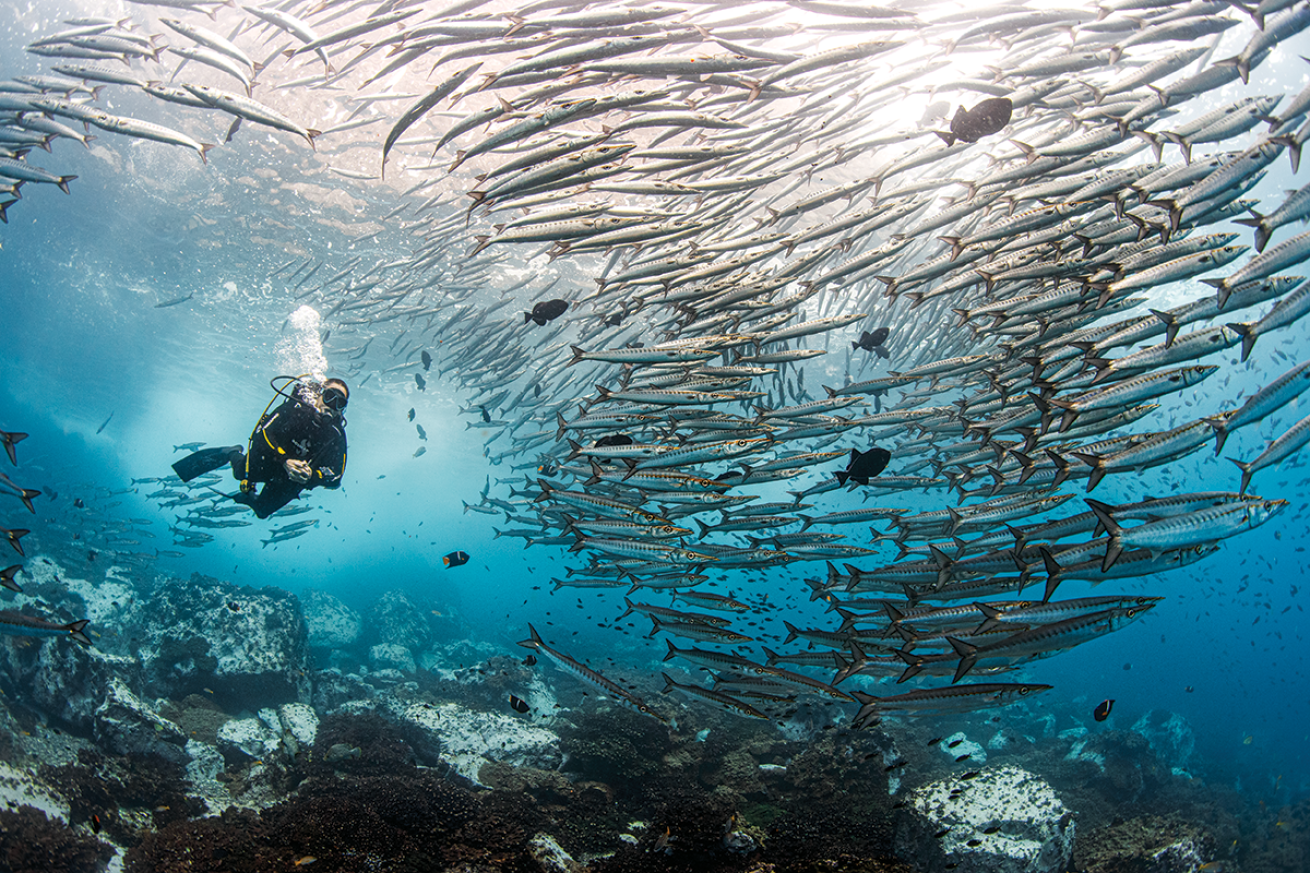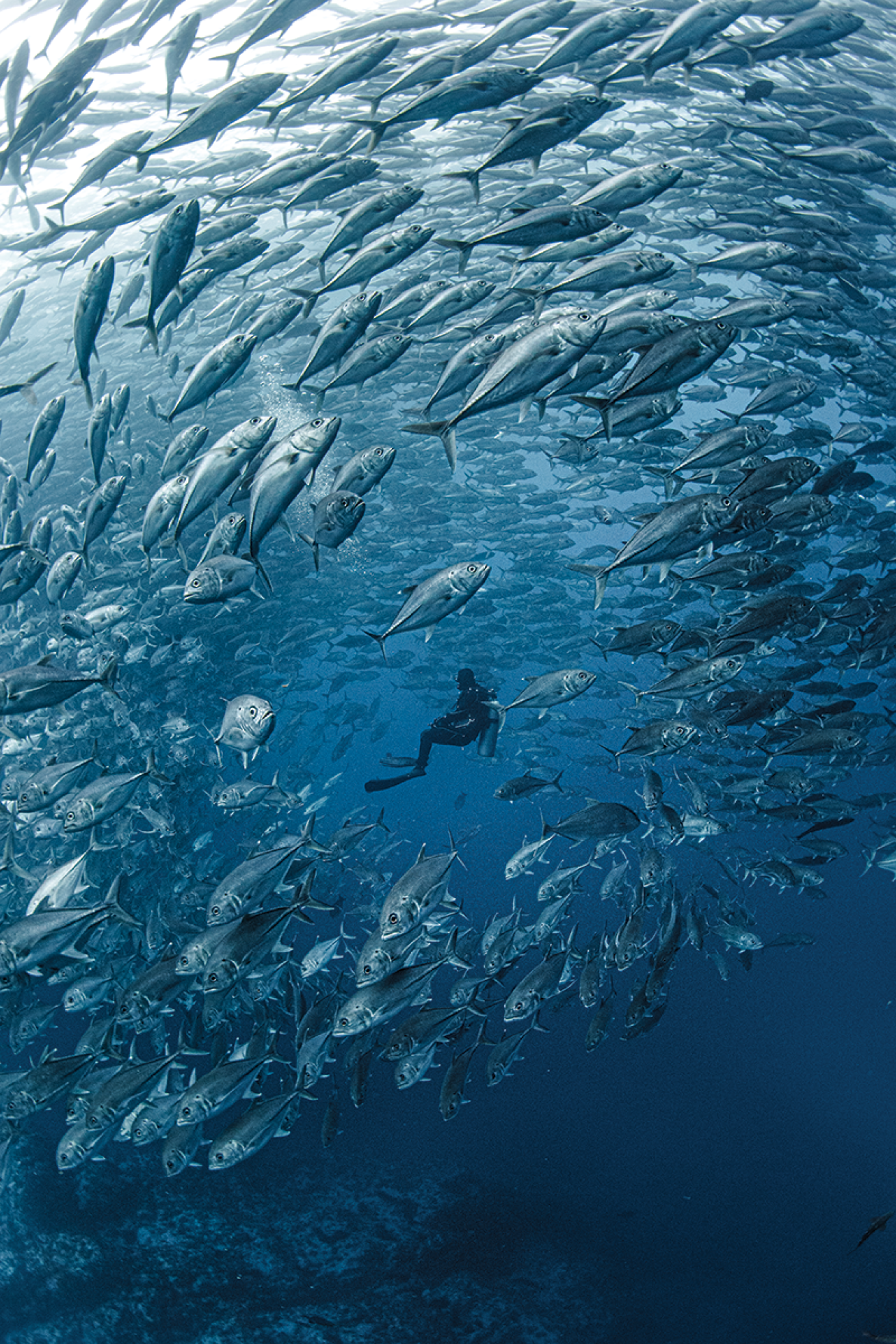How to Pick the Right Dive Mask For You

Annie CrawleyHaving a repeatable mask routine will help you prevent fogging. Check your strap for wear and prep your mask with defog before every dive.
A mask is your window to the underwater world. As the single most important piece of scuba gear, it needs to fit correctly. Technological advances have created more comfortable masks in every color combination. But if your mask fits poorly, it won’t matter how good it looks.
Fit For Success
Refrain from choosing your mask by brand, color, price or lens design. Finding the perfect mask for your face and vision trumps all other factors and can only be done by trying them on. To start, grab a mask and follow these simple steps.
Move the hair off your forehead and place the mask on your face (do not put the strap on). Inhale through your nose. Does it stick to your face? Notice how it feels. Does the top hard part hit the bridge of your nose? Is air leaking in from any gaps? Does your nose feel comfortable, or is it hitting the tip or rubbing the sides? Any discomfort you feel on land will be amplified under pressure, so pay attention if you feel anything that isn’t right.
Go through this process with all the masks on display. You will start to feel the differences between them. The silicone on some masks may be more rigid and less pliable than others. Usually, through trial and elimination, you can narrow it down to a couple of masks that you really like. As you try them on again, look around the room. Can you see one lens or two? Can you see the edge of the mask in your field of vision? I prefer a windowless view. If I can see the edge of the mask, it impairs my vision underwater. Many new divers prefer a clear skirt, which allows a lot of ambient light into the field of view. Many underwater photographers, wreck divers and more advanced or task-specific divers like black-skirted masks, which block the ambient light from the sides to give a more focused view underwater. Once you narrow down your choices to a few that fit, you can start considering color, frames, cost, lens selection and a snorkel to match.
If you need prescription lenses, this may affect your mask selection as not all masks are compatible with prescription lenses. You may need to order custom lenses depending on your vision. Regardless, you will want to bring in a recent prescription complete with the interpupillary distance (IPD). Different strengths of bifocals can be glued into any mask, but interchangeable lenses are better. If you plan to use glue-in lenses, follow the directions and test them so they don’t come off in the middle of your dive.
Don’t Miss A Step
Once you purchase your mask, you’ll need to remove an invisible silicone film from the inside of the lens. This film is applied during the manufacturing process as a way to protect the lenses from damage.
However, if you do not remove this film properly before your first dive, it will cause your mask to fog continuously despite defogging efforts.

Annie CrawleyA properly fitted mask lets you experience moments of zen underwater, such as being engulfed by schooling jacks in Malpelo, Colombia.
Your local dive store might sell a product to remove this film, or help you with the process. If not, you can use plain white toothpaste (not gel) or Soft Scrub. Both of these products have the right amount of grit to remove the chemical. Using a generous amount of grit cleaner, rub hard for a few minutes on the inside of your lenses. Rinse your mask in a sink and repeat two more times. Whatever you do, do not dive with a new mask without going through these prep steps.
After completing the above steps, defog the mask as if you were going on a dive. There are a few different defogs on the market; choose your favorite. Test a new mask by running through a dry dive before taking it into the water. If it still fogs up, you might still have the sealant in place. Repeat the process as needed.
On your dive, once you defog your mask, rinse and put it on your face, leaving it in place. If you break the seal out of the water, your mask will fog. This is the most common problem for new divers that are not used to wearing their masks. The only thing worse than a foggy mask on a dive is a foggy mask on a night dive!
Mask-Clearing Tips
In order to fit your mask on your face, it’s important you adjust your mask strap correctly. Your strap should be positioned at an angle on the back of your head that holds it in place.
If you find a little bit of water leaking into your mask but you’ve gone through all the steps to choose a properly fitted mask, it’s usually happening because your strap is too loose or too tight. If the strap moves up and down as your hair moves in the water, it can leak.
Remember if you wear a hood, or are taking off a hood, adjust your strap to fit your head before defogging your mask. Because your mask moves a little bit when you equalize, it can ride up on your face and push up on your nose, or move down over your front lip.
If your mask moves in this way, you need to add air as if you were equalizing at the same time, move and reseat your mask on your face.
When you equalize your mask, have your hand at the top of the mask and gently move it around. If you smile and laugh underwater, you may crack the seal of your mask around your nose as you flex your facial muscles, so be prepared to clear your mask on every great dive!
Pro Tip
Don’t buy a dive mask at a non-specialty big box store or on the internet. Many of the snorkel-gear sets sold at big box stores carry brand names but are created for a yearly snorkel market and not for scuba. For the best-fitted mask, you really need to try on a variety of masks at a professional dive shop or dive resort.










